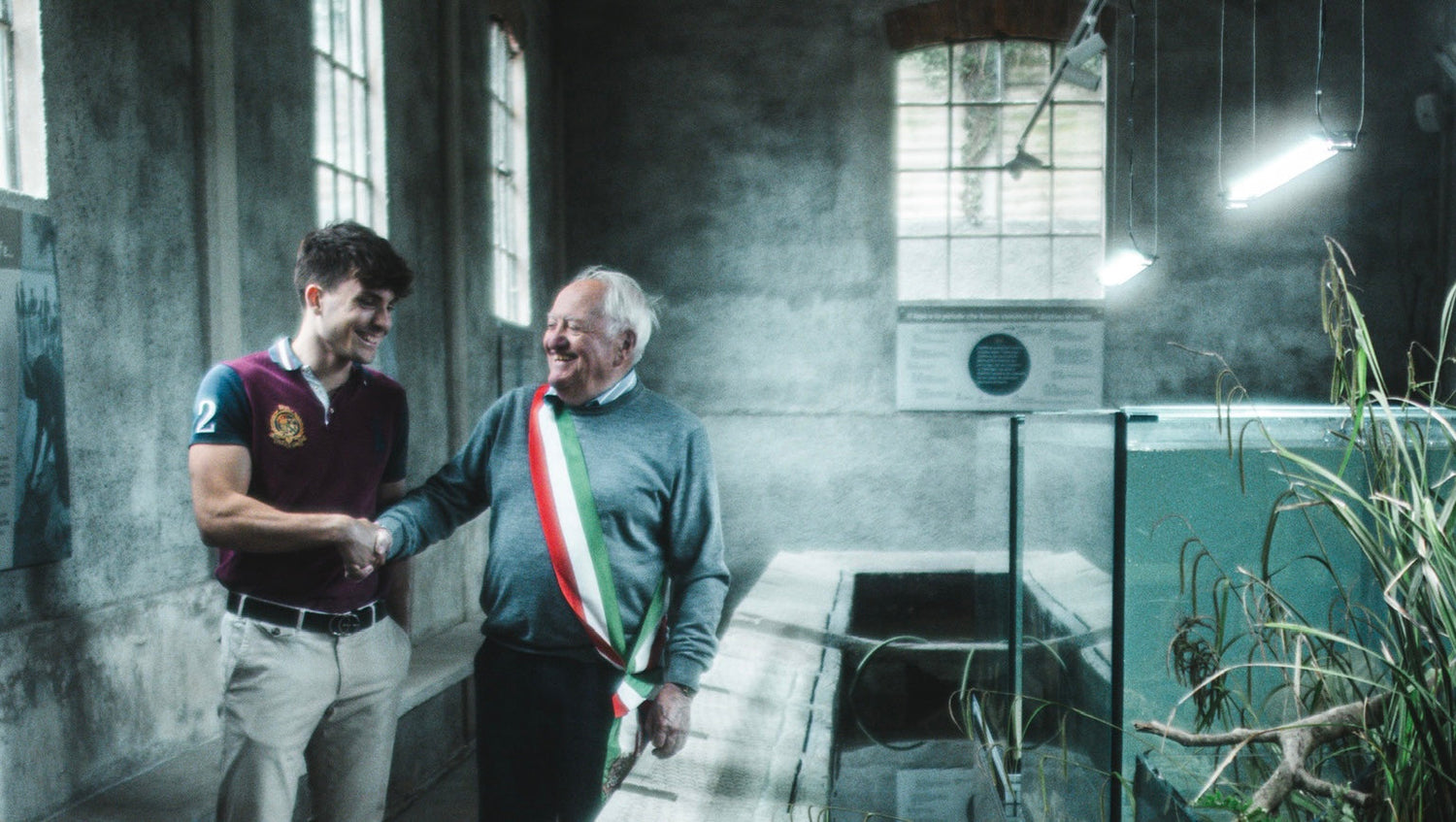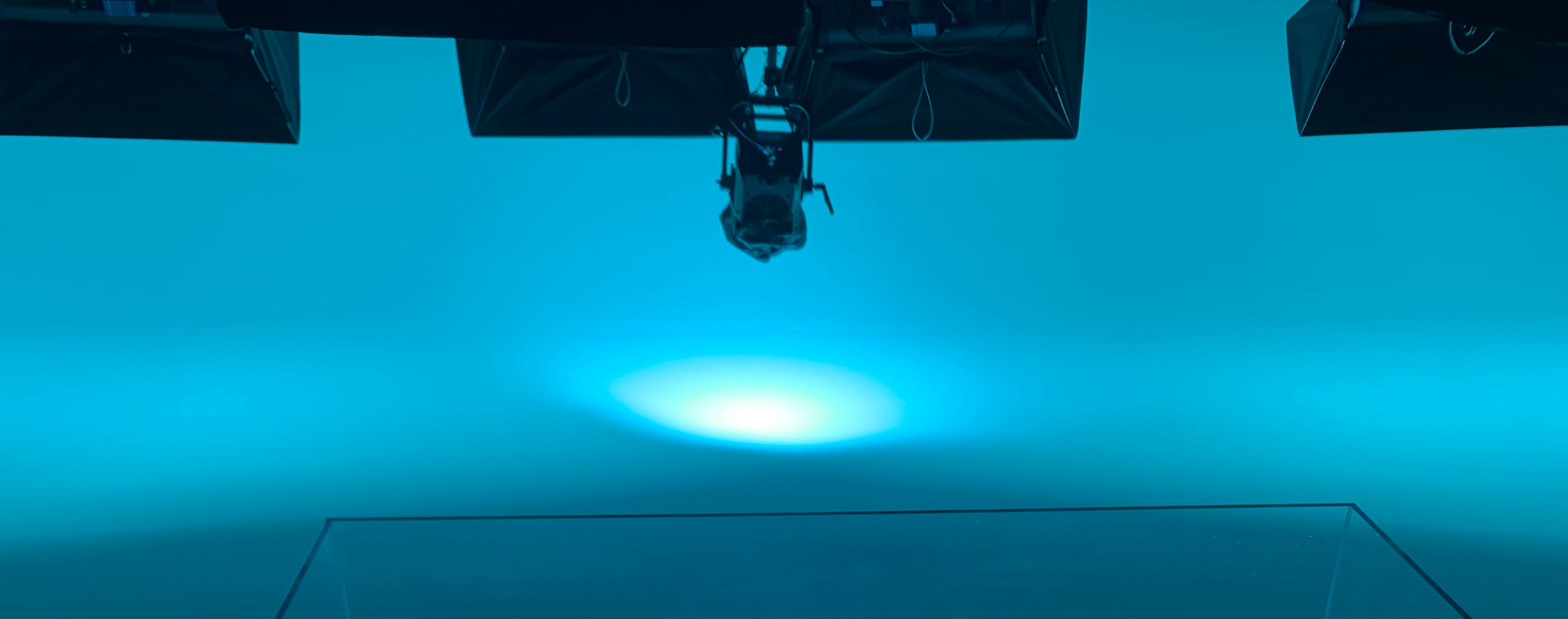The first fish museum on Lake Varese! Yes, thanks to our collaboration with the municipality of Cazzago Brabbia, which sees the outgoing mayor Emilio Magni as the project applicant, we have created aquarium ecosystems that will host various fish species from the provincial lakes.

Credits Luca Lari
For those who don't know it, Cazzago Brabbia is a small historic town overlooking the southern shore of Lake Varese (in the province of the same name), renowned for its natural beauty and rich biodiversity, is preparing to welcome a new attraction that promises to fascinate residents and tourists: a small fish museum dedicated to the discovery of the aquatic species of the lake and Italian fresh waters that emerges from the tanks of a former historic wash house that is celebrating its centenary.

Historic wash houses during restoration and construction of aquariums.
This ambitious project includes three thematic aquariums, each of which hosts a selection of species representative of different aquatic ecosystems.
On a technical level, the tanks measuring up to 2 metres are made of thick glass from our blue line and for greater safety in public places we apply certified shatterproof film.
The filtering system includes a large pressure pond filter with a coverage capacity of approximately 19,000 liters (compared to the total 3,500 liters of the tanks). This is to make the biological functioning of the tanks even more stable and to be able to handle a high organic load.
Furthermore, thanks to the use of highly efficient UVC sterilization, we have made aquariums and ecosystems safe from any pathogenic contamination.
Aquarium 1

The first aquarium is a shallow tank of almost 2 meters high only 45 cm so that you can observe the species from above and simulate the biotope of a lake shore. Its height and proportions allow the observation and growth of marsh plants. In the water instead we can observe the following species:
ALBURNUS ALBURNUS ''Bleak''

The Whitebait (Alburnus alburnus) is a small species of freshwater fish belonging to the Cyprinidae family. Widespread throughout much of Europe, it is a very common native species in Italy, present in numerous lakes and rivers, including Lake Varese.
The Alborella has a long history in Europe, being one of the most common fish species in freshwater bodies. In Italy, its presence has been documented for centuries. Traditionally, it has been an important resource for local fisheries, both for human consumption and as bait for fishing larger species. Over the years, the Alborella population has undergone variations due to environmental changes, pollution and the introduction of alien species.
Characteristics of the Alborella
The bleak is a small fish, usually 10 to 15 cm long, with an elongated and laterally compressed body. It has a bright silver color, with a clearly visible lateral line. The bleak feeds mainly on small invertebrates, insect larvae and plankton, playing a crucial role in the aquatic food chain.
Presence in Lake Varese
In Lake Varese, the Alborella was a widespread native species. The waters of the lake, rich in nutrients and with abundant vegetation, provide an ideal habitat for this species. The presence of the Alborella is particularly important for the ecosystem of Lake Varese because it represents a fundamental food source for many predators, such as the Pike and the Royal Perch. Furthermore, its abundance indicates a good state of health of the lake waters, since this species is sensitive to pollution and environmental changes.
It is a key species for the biodiversity of the lake which unfortunately is disappearing despite the efforts of fish farms to repopulate it.
Bibliography
-
Zerunian, S. (2002). Doomed to extinction? Biodiversity, biology, threats and conservation strategies of native freshwater fishes in Italy. WWF Italia.
-
Kottelat, M., & Freyhof, J. (2007). Handbook of European Freshwater Fishes. Publications Kottelat.
-
White, P. G. (1998). Diversity of Barbini (Osteichthyes, Cyprinidae) in Italy, with description of a new genus and a new species. Italian Journal of Zoology.
Crayfish (Austropotamobius pallipes)

The European crayfish (Austropotamobius pallipes), also known as the European crayfish, is a species of freshwater crustacean belonging to the Astacidae family. This species is native to much of western and central Europe, including Italy, where it is present in numerous freshwater streams, including Lake Varese.
The Crayfish has a long history in Europe, where it has been widely distributed and appreciated for its ecological and culinary importance. In Italy, its presence has been documented for centuries. However, during the 20th century, crayfish populations have suffered a drastic decline due to pollution, habitat destruction and the introduction of invasive alien species, such as the Louisiana crayfish (Procambarus clarkii), which introduced crayfish plague (Aphanomyces astaci), a lethal disease for native crayfish.
Characteristics of the River Crayfish
- Coloration : Varies from olive green to light brown, often with a bluish or grayish hue. The underside of the claws is usually lighter.
- Size : It can reach a length of 10-12 cm, including limbs.
- Claws : robust and well developed, used for defense and for handling food.
The Crayfish is an omnivore and feeds on a variety of organic materials, including insects, small fish, aquatic plants and detritus. It is a nocturnal species, most active at night when it comes out to search for food.
Presence in Lake Varese
Unfortunately, this crayfish now lives in the highest streams of the province and tends to become increasingly scarce. The protection of the Crayfish and the management of the threats that concern it are essential to maintain the ecological balance of the lake and to guarantee local biodiversity.
Bibliography
-
Holdich, D. M. (2003). Ecology of the White-clawed Crayfish, Austropotamobius pallipes. Conserving Natura 2000 Rivers Ecology Series No. 1. English Nature.
-
Füreder, L. (2009). Flusskrebse: Biologie - Ökologie - Gefährdung. Springer Verlag.
-
Gherardi, F., & Holdich, D. M. (1999). Crayfish in Europe as alien species. How to make the best of a bad situation? AA Balkema, Rotterdam.
Adonta cygnea ''Freshwater mussel''

Anodonta cygnea, commonly known as the Freshwater Mussel or Swan Mussel, is a species of bivalve mollusc belonging to the Unionidae family. This species is widespread in Europe and some parts of Asia, living in fresh waters such as lakes, rivers and ponds. Anodonta cygnea is also present in Lake Varese.
It has been known since ancient times for its ecological role in freshwater bodies. The freshwater mussel has been studied for its ability to filter water and contribute to the purification of aquatic ecosystems. In addition, its valves have been used in the past for ornamental and artisanal purposes.
Characteristics of Anodonta cygnea
Anodonta cygnea is easily recognizable thanks to its large size and the characteristic shape of its valves.
The valves are thin but strong, and Anodonta cygnea has a siphon that it uses to filter water and feed on suspended particles and small organisms. This filtration process contributes significantly to the quality of the water in its habitat.
Presence in Lake Varese
In Lake Varese, Anodonta cygnea finds a favorable habitat thanks to the presence of calm waters and rich underwater vegetation. The freshwater mussel settles on muddy or sandy bottoms, where it can anchor itself firmly and filter large volumes of water.
Anodonta cygnea is a key species for the ecosystem of Lake Varese. Its ability to filter water and improve the quality of the aquatic environment makes its presence extremely valuable. The protection and conservation of Anodonta cygnea are essential to maintain the ecological balance of the lake and to ensure the long-term sustainability of its ecosystem.
Bibliography
-
Aldridge, D. C., & Mueller, K. W. (2001). The effect of water quality on Anodonta cygnea. Freshwater Biology.
-
Killeen, I., Aldridge, D. C., & Oliver, G. (2004). Freshwater Bivalves of Britain and Ireland. National Museum Wales.
-
Young, M., & Williams, J. (1983). The reproductive biology of the freshwater mussel Anodonta cygnea. Journal of Molluscan Studies.
Aquarium 2

The second aquarium with its dimensions allows you to observe the following species:
LEPOMIS GIBBOSUS ''GOBBINO''

The Sunfish (Lepomis gibbosus), also known as the Sunfish, is a species of freshwater fish belonging to the Centrarchidae family. Native to North America, it was introduced into Europe at the end of the 19th century. In Italy, it is present in many bodies of water, including Lake Varese.
The Sunfish was introduced in Europe for ornamental purposes and to enrich the biodiversity of aquatic ecosystems. However, this species has proven to be highly invasive. Its introduction in Italy dates back to the early twentieth century, and since then it has colonized various lakes and rivers, adapting well to the new environmental conditions. The ability to survive in environments with different characteristics and its varied diet have facilitated its spread.
Characteristics of the Sun Perch
The Sun Perch is easily recognizable by its bright color, which varies from olive green to golden yellow, with iridescent orange and blue spots. It has a laterally compressed body and a small but robust mouth. It can reach a maximum length of about 25 cm, although the specimens are usually smaller.
Presence in Lake Varese
Lake Varese is an ideal environment for the Sunfish. The calm waters and the presence of rich aquatic vegetation provide a favorable habitat for the feeding and reproduction of this species. In the lake, the Sunfish feeds on invertebrates, small fish and insect larvae, contributing to the natural control of some species of aquatic insects.
However, the presence of the Sunfish in Lake Varese has also raised concerns. Being an invasive species, it can compete with native species for food and space, altering ecological balances. In particular, it can negatively affect local fish populations, reducing biodiversity.
The Sunfish is an interesting example of an alien species that has adapted well to new environments. Although its presence can have negative impacts on local ecosystems, in-depth studies and management interventions can help mitigate these effects. In Lake Varese, it is important to monitor Sunfish populations to ensure the conservation of the lake ecosystem and its native species.
Bibliography
-
Brunelli, S., & Gandolfi, G. (1993). Freshwater fish. Edagricole.
-
Smith, C. L. (1985). The Inland Fishes of New York State. New York State Department of Environmental Conservation.
-
Lazzari, G. (2002). Freshwater and Brackish Water Fish. Greentime Publishing.
Rudd (Scardinius erythrophthalmus)

The Rudd (Scardinius erythrophthalmus) is a species of freshwater fish belonging to the Cyprinidae family. Widespread in much of Europe and western Asia, the Rudd is a native species that populates numerous Italian lakes and rivers, including the Lake Varese.
The Rudd has been known and fished since ancient times. In Italy, it has always been considered a common species in freshwater bodies. The Rudd has resisted environmental changes and the introduction of alien species thanks to its ability to adapt. The Its diffusion was favoured by its ability to live in calm waters rich in vegetation.
Characteristics of the Rudd
The Rudd is easily recognizable by its elongated and laterally flattened body, as well as its distinctive coloration. The main characteristics include: silvery body with golden reflections, red fins, and a reddish-orange spot on the iris of the eye. It can reach a length of 25-30 cm, although the largest specimens can exceed 40 cm.
The Rudd feeds mainly on aquatic plants, algae, invertebrates and small crustaceans. Its varied diet and ability to adapt to different types of food contribute to its diffusion.
In Lake Varese, the Rudd plays an important ecological role. As a herbivore, it helps control the growth of aquatic plants, preventing excessive proliferation that could suffocate other species. Furthermore, it is a source of food for numerous predators, including the Pike and the Royal Perch.
Bibliography
-
Kottelat, M., & Freyhof, J. (2007). Handbook of European Freshwater Fishes. Publications Kottelat.
-
Keith, P., & Allardi, J. (2001). Atlas des poissons d'eau douce de France. Muséum national d'Histoire naturelle, Paris.
-
Zerunian, S. (2002). Doomed to extinction? Biodiversity, biology, threats and conservation strategies of native freshwater fishes in Italy. WWF Italia.
Aquarium 3

The third aquarium with its dimensions allows you to observe the following species:
Rhodeus sericeus

Rhodeus sericeus, commonly known as Rhodeus amaro or simply Amaro, is a small species of freshwater fish belonging to the Cyprinidae family. Native to much of Europe and Asia, it is present in several Italian bodies of water, including Lake Varese.
Rhodeus sericeus has been known in Europe since ancient times, and its presence has been documented in numerous watersheds. This fish has attracted interest for its unique reproductive biology, which involves a symbiotic interaction with bivalve molluscs. In Italy, it has been introduced into various water bodies both for ornamental purposes and for the control of mosquito populations.
Characteristics of Rhodeus sericeus
- Coloration : Males are brightly colored during the breeding season, with blue-green highlights and a red spot on the flank. Females are more soberly colored.
- Size : usually reaches a length of 4-5 cm, rarely exceeding 7 cm.
- Body shape : Small, laterally compressed body, with well-developed fins.
A distinctive feature of Rhodeus sericeus is its reproductive method. Females lay eggs inside the valves of bivalve mollusks, where the larvae develop in a protected environment. This reproductive behavior helps protect the eggs from predators and provides a stable environment for the development of the young.
Rhodeus sericeus contributes to the biodiversity of Lake Varese and plays a significant ecological role. Its interactions with bivalves not only help its reproduction, but also contribute to the dispersal and health of the molluscs themselves. However, water quality and the presence of invasive species can negatively affect Rhodeus sericeus populations.
Bibliography
-
Kottelat, M., & Freyhof, J. (2007). Handbook of European Freshwater Fishes. Publications Kottelat.
-
Smith, C., & Reynolds, J. D. (1998). Sperm competition and the evolution of egg guarding in the European bitterling, Rhodeus sericeus. Behavioral Ecology and Sociobiology.
-
Aldridge, D. C. (1999). The morphology, growth and reproduction of Unionidae (Bivalvia) in a Fenland waterway. Journal of Molluscan Studies.
Tench Tench ''Tench''

The Tench (Tinca tinca) is a species of freshwater fish belonging to the Cyprinidae family. Widespread throughout Europe and western Asia, the Tench is known for its adaptability to different aquatic environments. In Italy, it is a native species common, present in many lakes and rivers, including Lake Varese.
Tench has been known since ancient times for its economic and nutritional importance. Documented since the ancient Romans, Tench has been farmed and fished in many European regions. Over the centuries, it has been introduced into new habitats to improve local fish stocks. Tench has maintained a significant role in commercial and recreational fisheries, due to its hardiness and the quality of its meat.
Characteristics of Tench
The Tench is easily recognizable by its robust and stocky body, covered with small scales covered with a layer of mucus that makes it slippery to the touch. It can reach a length of 70 cm and a weight of over 7 kg, although generally the specimens are smaller.
Presence in Lake Varese
Lake Varese offers an optimal environment for Tench thanks to its calm waters and rich underwater vegetation. Here, Tench finds abundant food and ideal areas for reproduction. Its presence is an indicator of a good ecological balance, since Tench contributes to the control of the population of invertebrates and the cleaning of the lake bed.
In Lake Varese, Tench is appreciated by both recreational and commercial fishermen for the quality of its meat, considered delicious and nutritious. In addition, Tench plays an important ecological role, contributing to the biodiversity of the lake and serving as prey for large predators such as Pike and Perch.
Its stable and widespread presence indicates good water quality and a well-balanced ecosystem.
Bibliography
-
Keith, P., & Allardi, J. (2001). Atlas des poissons d'eau douce de France. Muséum national d'Histoire naturelle, Paris.
-
Kottelat, M., & Freyhof, J. (2007). Handbook of European Freshwater Fishes. Publications Kottelat.
-
Zerunian, S. (2002). Doomed to extinction? Biodiversity, biology, threats and conservation strategies of native freshwater fishes in Italy. WWF Italia.




2 comments
Claudio Pesenti
Complimenti!
Il paese merita una visita per il museo, i murales, le ghiacciaie di lago, il lago…
Emamuele
Veramente un ottimo Lavoro
Finalmente si inizia a valorizzare il territorio di Varese
Leave a comment
All comments are moderated before being published.
This site is protected by hCaptcha and the hCaptcha Privacy Policy and Terms of Service apply.